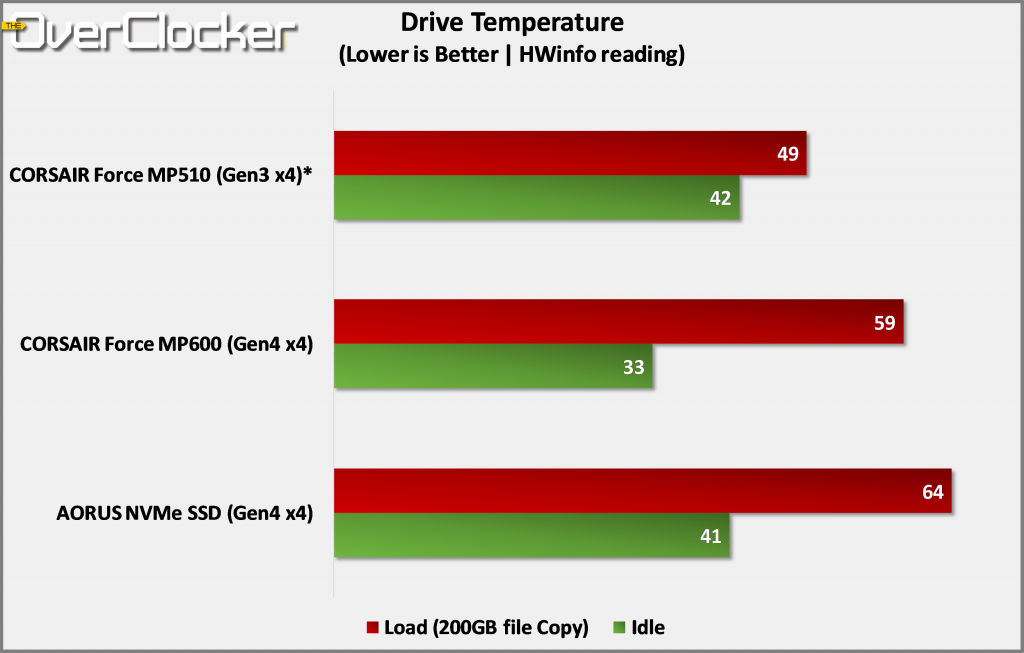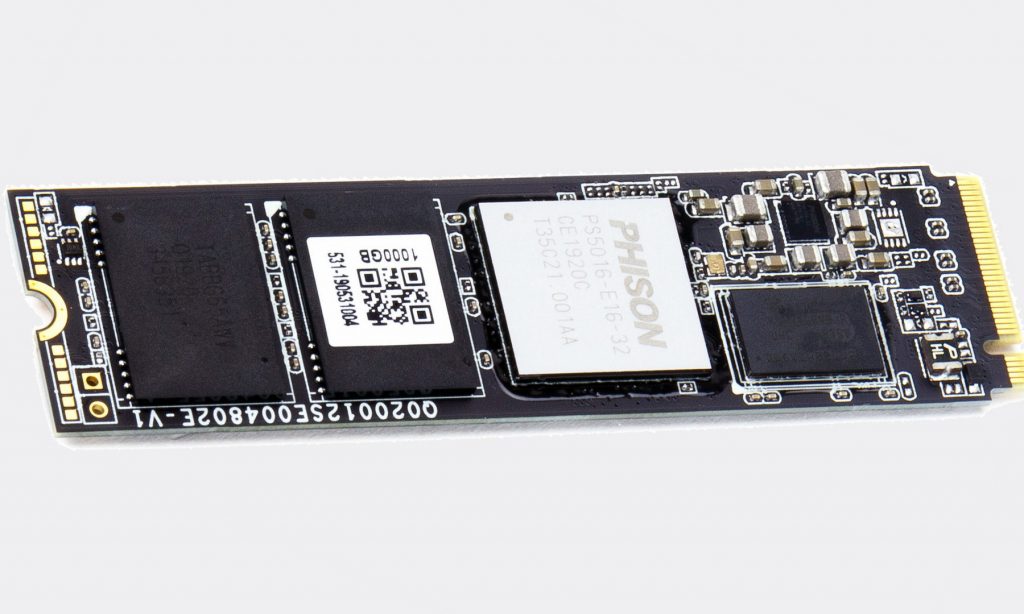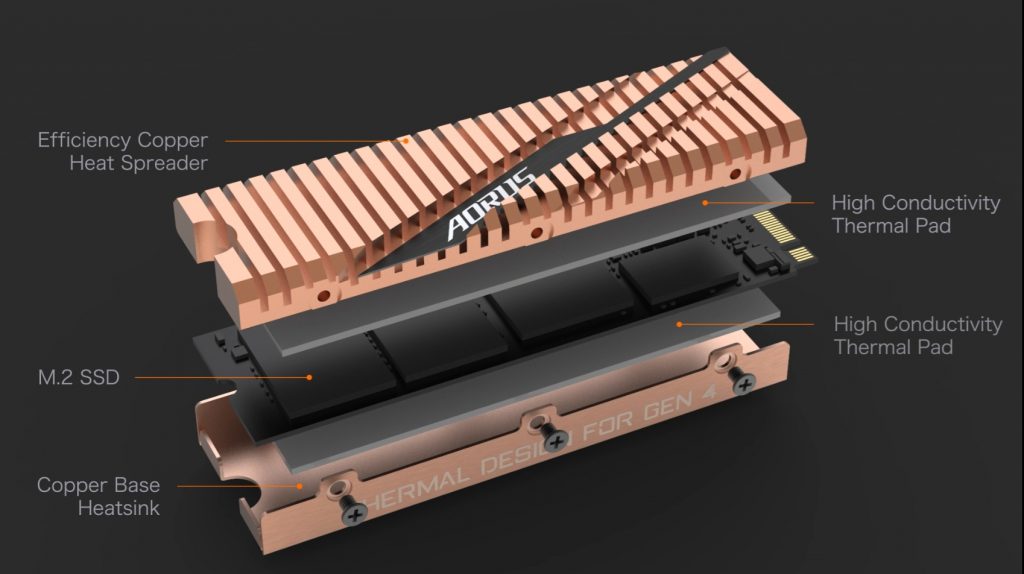AORUS SSD – NVMe Gen4 SSD Review
General Overview
GIGABYTE has done what I wish other drive vendors would and that is use a removable heat sink. This is easily done by simply unscrewing screws on the side of the drive. I’m glad that GIGABYTE is aware that most motherboards, including their own have heat sinks and as such removing this one on which ships with the drive has to be a viable option.
Temperature wise, the AORUS SSD is warmer than the Force MP600 under load, but these kinds are normal. A 64’C load temperature on the AORUS SSD is well within specifications and this level of heat poses no threat to the longevity or performance of your drive.

As with all M.2 drives I always recommend airflow over the drive as it makes a measurable difference in drive temperatures under load. The MP510 here, was installed on a PCIe 3.0 x4 riser card, which has a much beefier heat sink than all M.2 drives I’m aware of, hence the low load temperatures. If you’re using this drive on the X570 AORUS MASTER, I would recommend you insert this drive in the uppermost M.2 socket, above the first Gen4 x16 PCIe slot. Not all motherboards allow this of course, but if you have such a motherboard, definitely use this socket over the others.

Above we can clearly see the new Phison PS5016-E16 controller, the DRAM cache and of course two NAND ICs. The remaining ICs are on the under side of the drive. What makes drives heat up is the controller, not so much the NAND as many of you are aware. Expect to see the very same configuration and drive layout in a number of drives.







